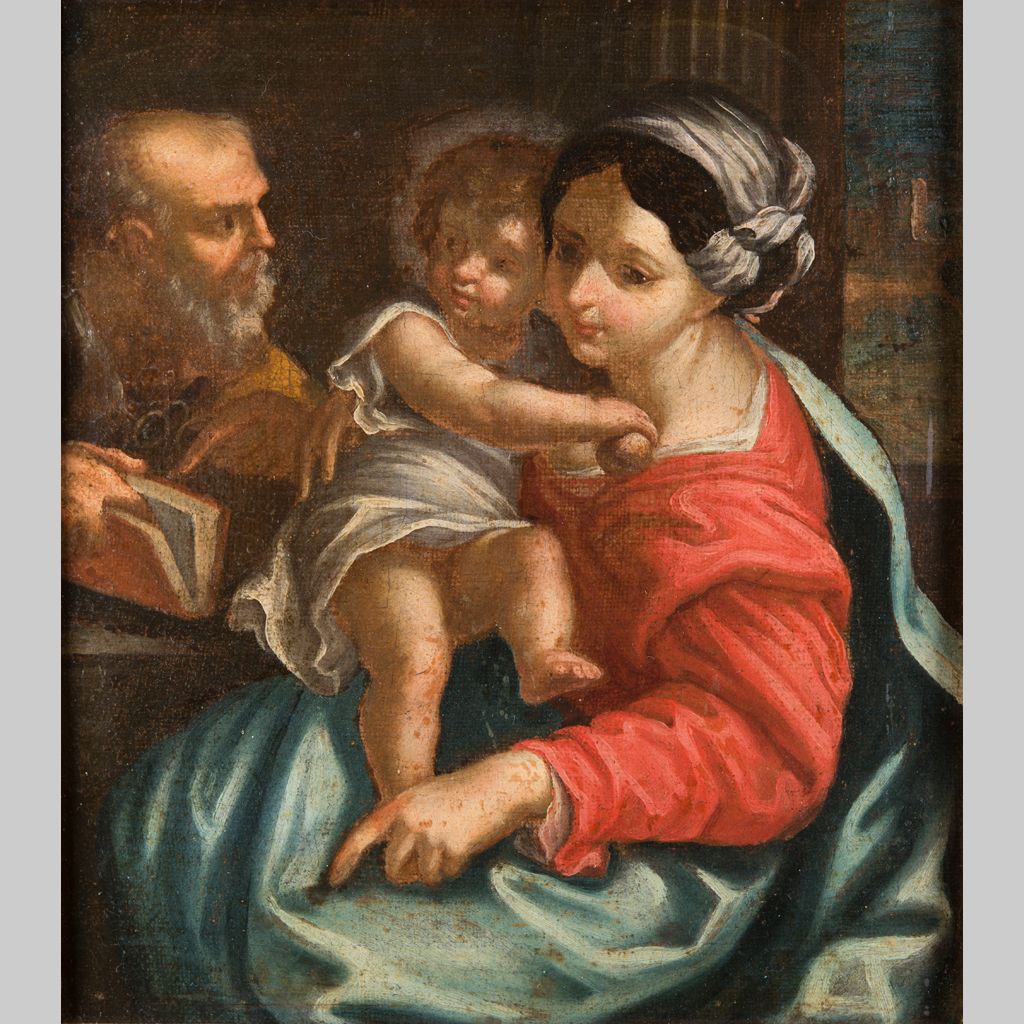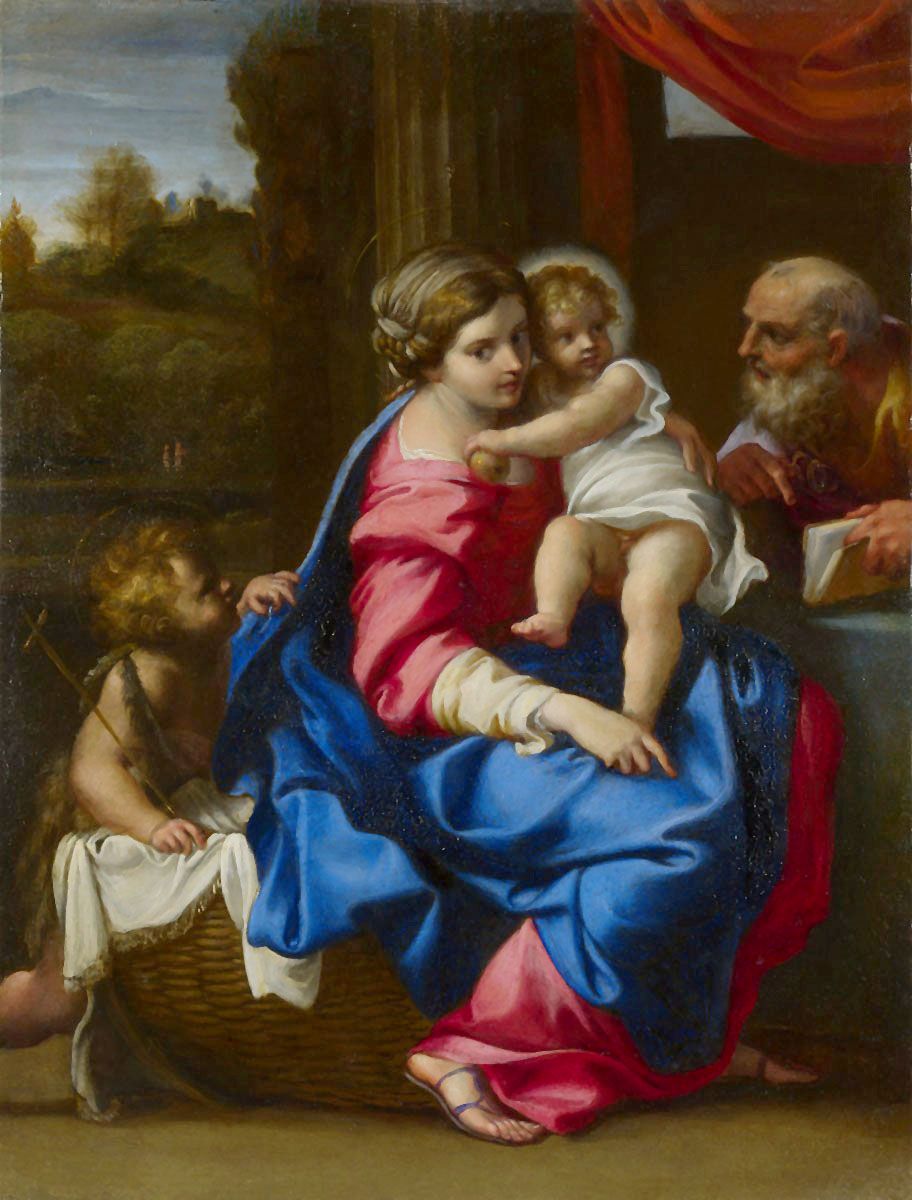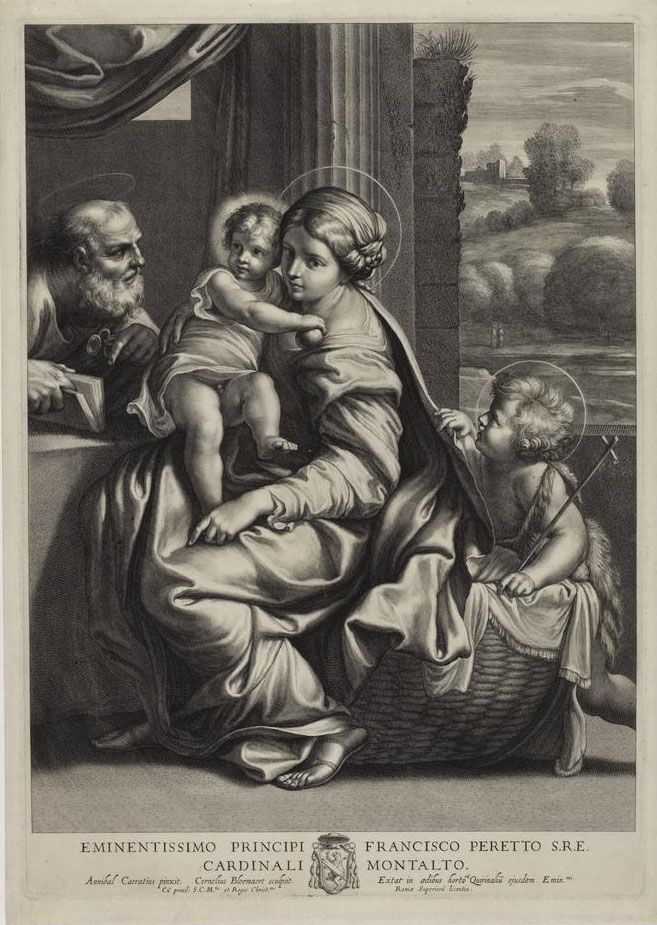After Annibale Carracci (1560–1609)
Holy Family (Montalto Madonna), n.d.
Oil on canvas mounted on panel
McMullen Museum of Art, Boston College, 1988.85

Stephanie C. Leone
Professor, Art History

The Holy Family is a reverse copy of a detail of Annibale Carracci’s famous Montalto Madonna, c. 1598–1600, now in the National Gallery, London1 (see image). Though small and partial, the painting tells the story of Italian art from the High Renaissance in the sixteenth century to the eighteenth-century Grand Tour, as well as the enduring appeal of this classical art tradition in nineteenth-century Boston.
In The Lives of the Modern Painters, Sculptors and Architects of 1672, Giovan Pietro Bellori extolled Annibale Carracci (1560–1609) as the painter who restored Italian art to the ideal, harmonious style established by the celebrated Raphael (1483–1520), and he praised the beauty of Carracci’s Holy Family, made for Cardinal Alessandro Peretti Montalto. The so-called Montalto Madonna represents the robust yet elegant figures of the Virgin Mary and Christ Child, engaged physically and psychologically with the young John the Baptist on the left and Joseph on the right. Grounded in a monumental interior set against a naturalistic landscape, this interconnected and balanced figural group is the perfect blend of earthly domesticity and heavenly grace.
As an undergraduate at Boston College, Dr. Annie McEwen Maloney ’14 argued that this type of painting was prized by eighteenth-century Grand Tourists, educated Northern European travelers schooled in ancient history, literature, and art who were eager to see Renaissance art. Because original Raphael and Carracci paintings were rarely for sale, as Bellori said, “this little picture was copied continuously while it was in the Villa Montalto in Rome, it was already being worn away in the hands of copyists.”2 The McMullen copy could have been made to satisfy the demand for this renowned image. But it was not made directly from the original because the dimensions and colors differ and the composition is reversed. Instead, it might have been made from the engraving by Cornelis Bloemaert (see image).
McEwan’s research determined that unlike the original Montalto Madonna, which was eventually acquired by Sir Archibald Campbell of Succoth, Scotland, the McMullen Holy Family was not purchased by an English Grand Tourist. Instead, Isabella Curtis of Boston (1832–1915) bought the painting in Siena during her Grand Tour in the nineteenth century. In 1912, Isabella and her sister Mary gave the Holy Family to Mary Jane Regan (1842–1925), librarian of the Boston Athenæum. A devout Irish Catholic immigrant, Regan must have considered Boston College an appropriate home for the Holy Family, which she presumably donated to the University by 1933.3
1. Larry Keith, “Annibale Carracci’s Montalto Madonna,” National Gallery Technical Bulletin 29 (2008): 46–59.
2. Giovan Pietro Bellori, The Lives of the Modern Painters, Sculptors and Architects, ed. H. Wohl and T. Montanari (New York: Cambridge University Press, 2005), 101.
3. Eileen Lyons, “Mary Jane Regan,” Eire Society of Boston Bulletin 41 (1982): 1–4.


